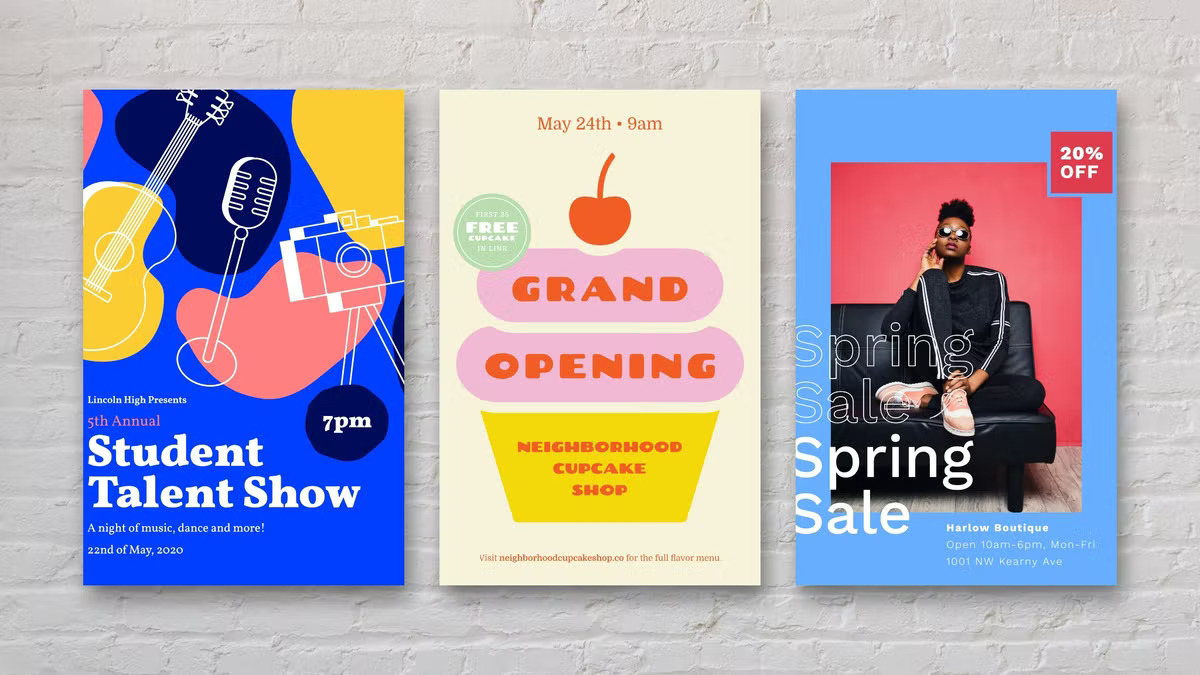Digital event flyers and printed flyers have been the go-to for event organizers when promoting their upcoming events. However, with the digital era taking over, digital event flyers are becoming more popular. Event organizers now have to weigh the pros and cons of using digital event flyers versus printed flyers. In this article, we will be discussing the pros and cons of both to help you make an informed decision on which one to use for your event.
An event flyer is a type of promotional material designed to advertise a specific event, such as a concert, festival, or conference. It typically includes eye-catching graphics, relevant information about the event (e.g. date, time, location, and ticket prices), and contact details for the event organizers. The purpose of an event flyer is to generate interest and excitement about the event and encourage people to attend.
Looking for some inspiration for your next event flyer? Check out these creative event flyer ideas! From bold and colorful designs to minimalist and modern layouts, these flyers are sure to grab attention and entice attendees. Whether you’re promoting a music festival, charity event, or business conference, a well-designed flyer can make all the difference in attracting a crowd. So why not take a look and get inspired for your next event promotion?
Pros of Digital Event Flyers
Cost-effective
One of the main advantages of using digital event flyers is cost-effectiveness. Compared to printed flyers, digital event flyers are relatively cheaper to produce. You don’t have to worry about printing costs, design fees, or shipping costs. This makes them an excellent option for those with a tight budget.
Wider Reach
With digital event flyers, you have the ability to reach a wider audience. You can easily share your flyer on social media platforms, email, and other online platforms. This means that you can reach people from different locations and backgrounds.
Environmentally Friendly
Digital event flyers are environmentally friendly. Unlike printed flyers, there is no paper or ink wastage. This helps to reduce your carbon footprint and promote a green event.
Cons of Digital Event Flyers
Technology Dependence
One of the main drawbacks of digital event flyers is their dependence on technology. Not everyone has access to the internet or social media platforms. This means that some of your target audience may not see your event flyer. Additionally, technical issues such as poor internet connection or device failure can hinder your efforts.
Low Visibility
Digital event flyers can get lost in the sea of information available online. They can easily get buried in inboxes, social media feeds, or other online platforms. This means that they may not be as visible as printed flyers.
Design Limitations
Digital event flyers have design limitations. They may not be as creative or eye-catching as printed flyers. This is because digital flyers are usually in a standard format, and they may not allow for advanced design features.
If you’re looking for customizable event flyer templates to make your next gathering stand out, look no further! This collection of event flyer templates includes a variety of designs for any occasion. From corporate events to birthdays and everything in between, our templates are easy to use and fully customizable. Start creating your perfect flyer today and make your event unforgettable.
Pros of Printed Flyers
Tangibility
One of the main advantages of printed flyers is their tangibility. They are physical, and people can hold them in their hands. This makes them more memorable than digital event flyers. Additionally, people can take them home or pass them on to others, which increases their reach.
Targeted Marketing
Printed flyers can be used for targeted marketing. You can distribute them to specific locations, such as cafes, shops, or local events. This means that you can target people who are more likely to attend your event.
Creative Freedom
Printed flyers allow for more creative freedom. You can use different colors, papers, and finishes to make your flyer stand out. Additionally, you can use advanced design features such as embossing, die-cutting, or foiling.
Cons of Printed Flyers
Costly
Printed flyers are usually more expensive than digital event flyers. This is because you have to consider printing costs, design fees, and shipping costs. Additionally, printed flyers have limited reach, which means that you may have to print more copies to reach more people.
Time-consuming
Producing printed flyers can be time-consuming. You have to consider the design process, printing, and shipping times. This means that you may have to start promoting your event much earlier to ensure that your flyers are ready on time.
Environmental Impact
Printed flyers have a negative impact on the environment. They contribute to deforestation, greenhouse gas emissions, and waste. This means that you have to be mindful of your environmental impact when using printed flyers.
Conclusion
Both digital event flyers and printed flyers have their own set of advantages and disadvantages. Digital flyers offer the convenience of reaching a wider audience through various online platforms and the ability to easily track their effectiveness. They are also more eco-friendly and cost-effective in the long run. On the other hand, printed flyers can be more memorable and impactful for certain audiences and may be necessary for events targeting specific demographics or locations without easy internet access.
Ultimately, the choice between digital and printed flyers depends on the specific event, audience, and budget. It may be beneficial to use a combination of both methods to maximize outreach and effectiveness. Regardless of the chosen medium, it’s important to create an eye-catching design and clear message to capture the audience’s attention and generate interest in the event.



